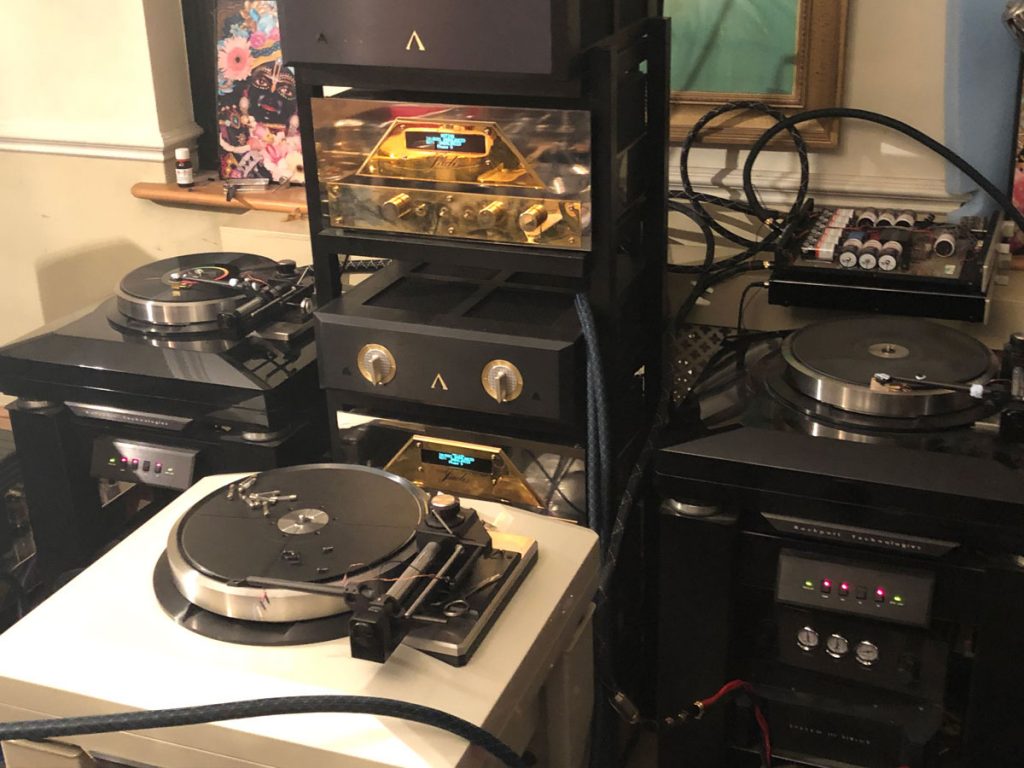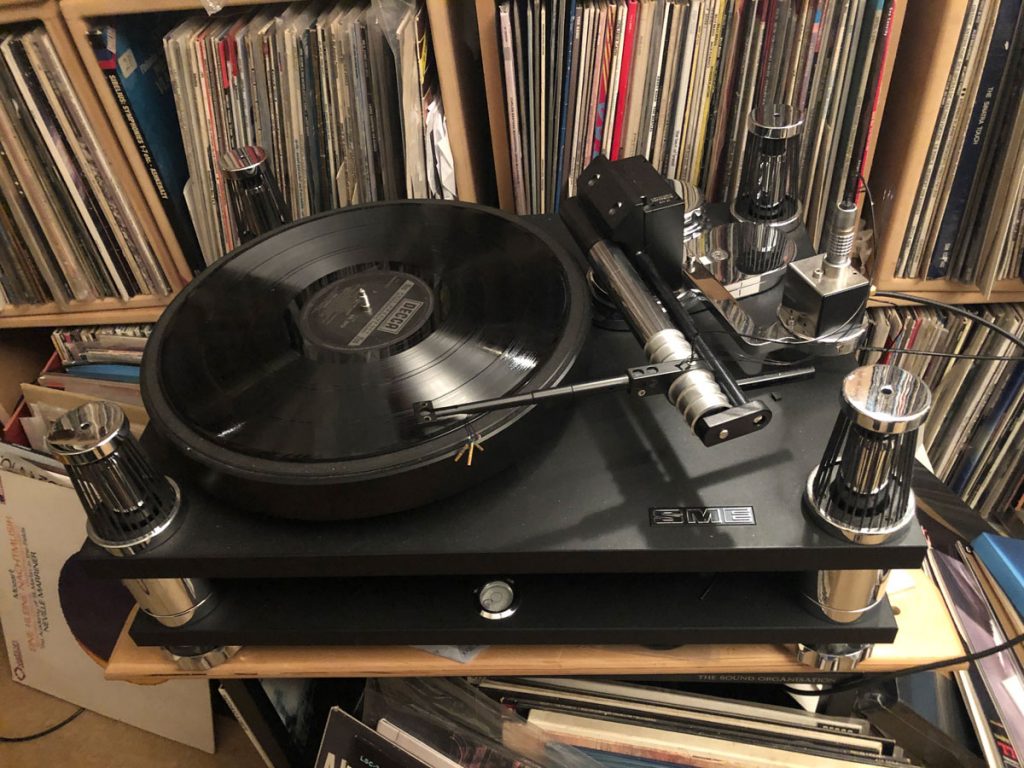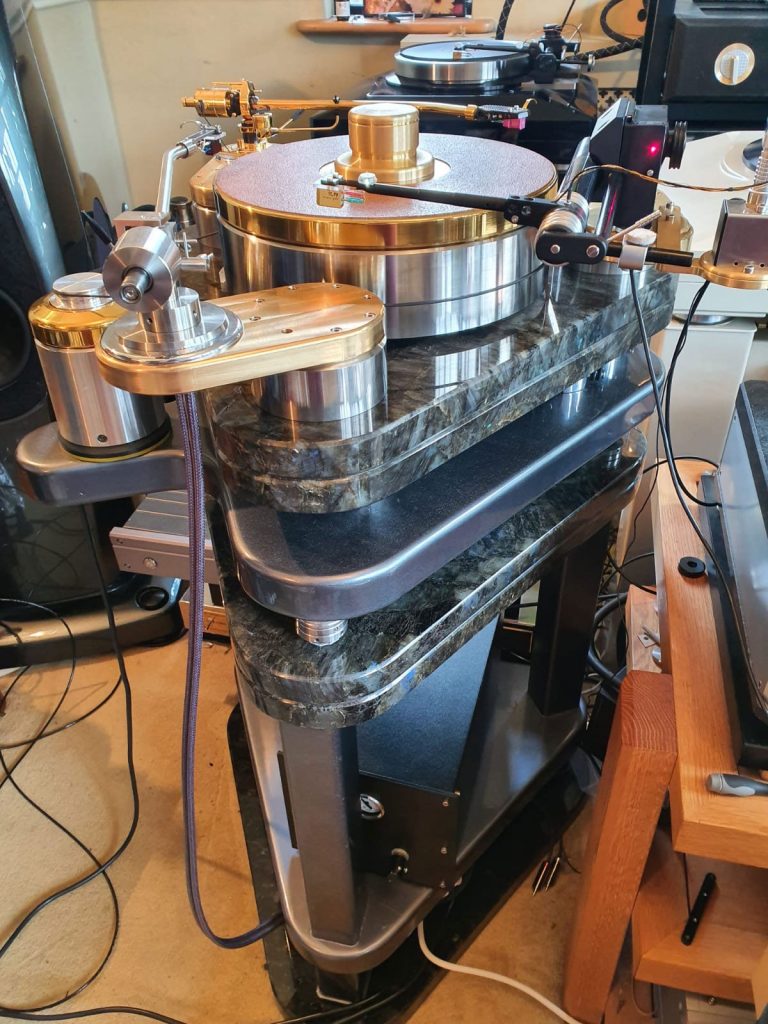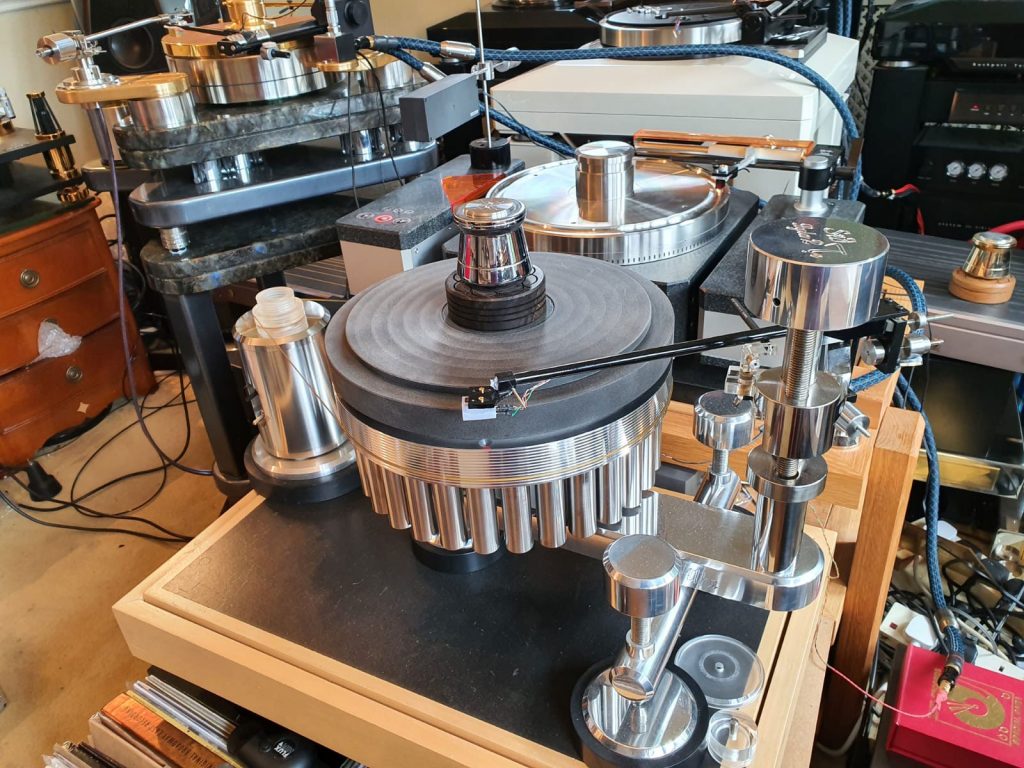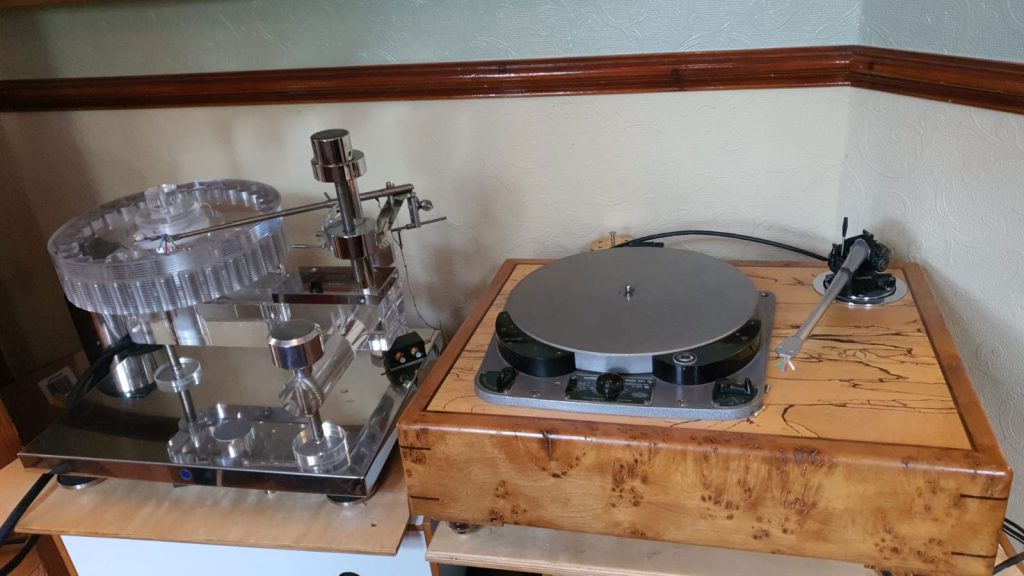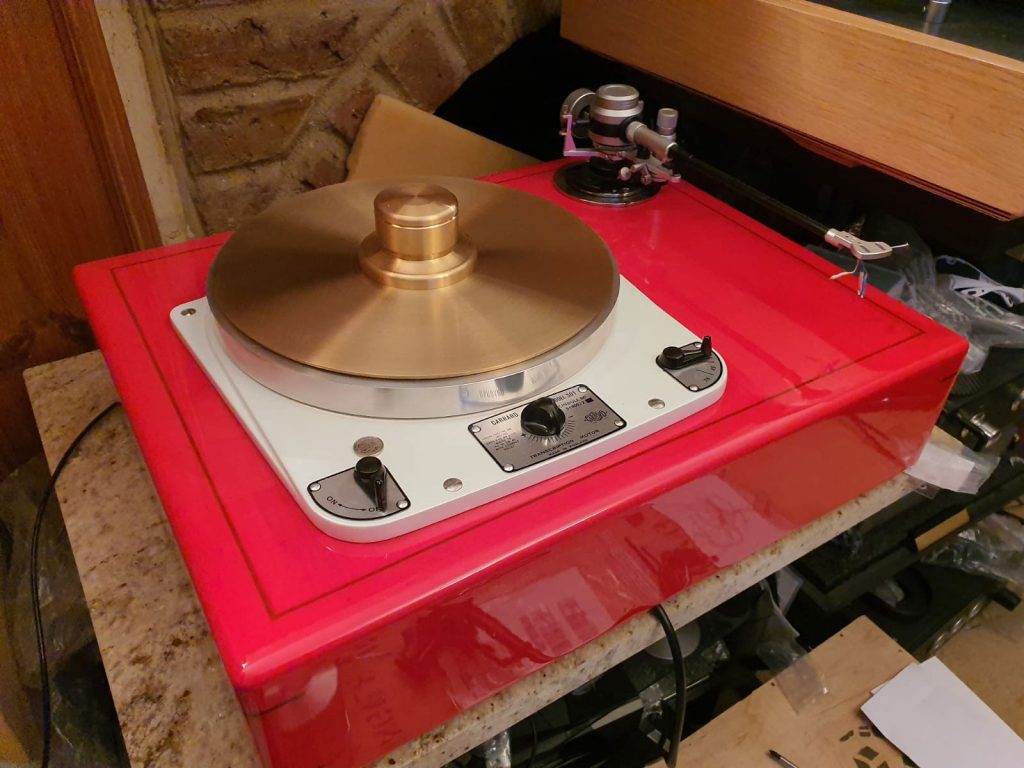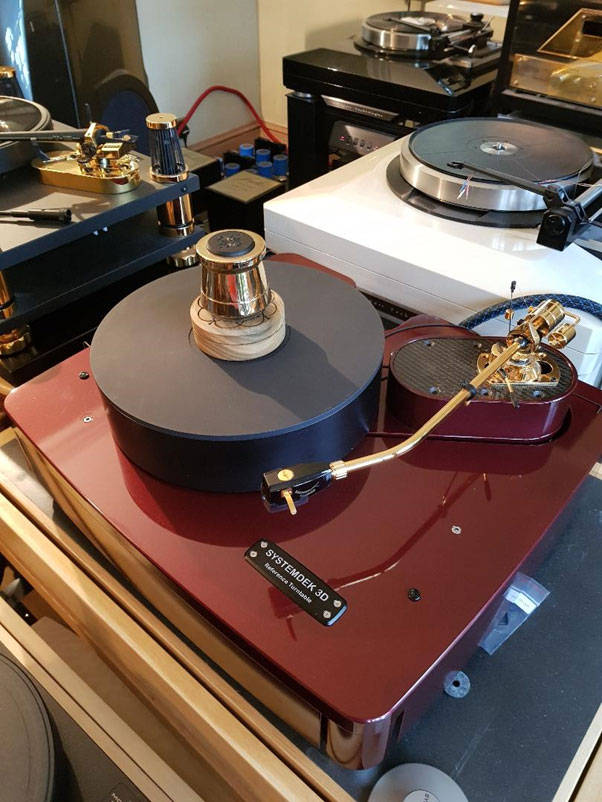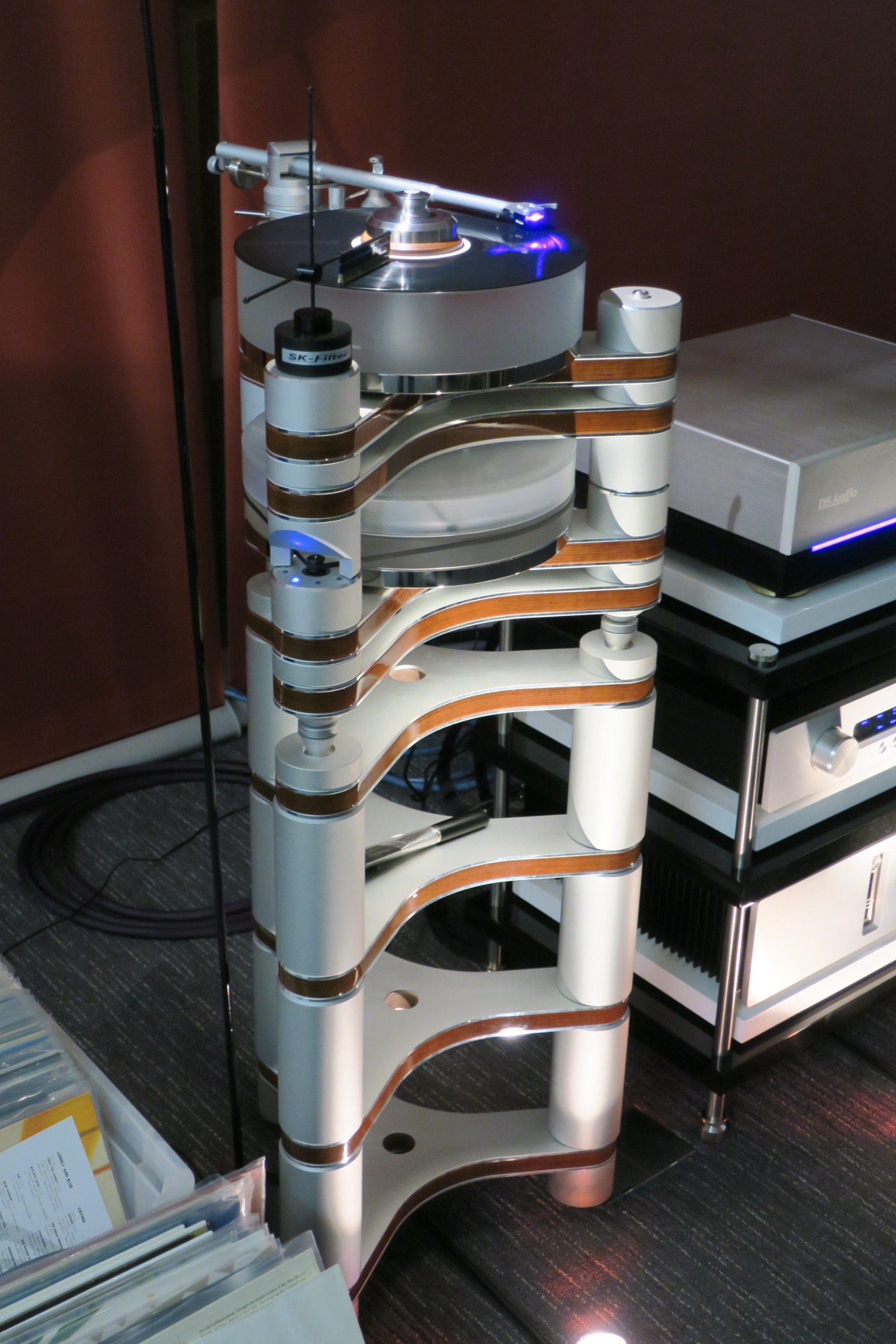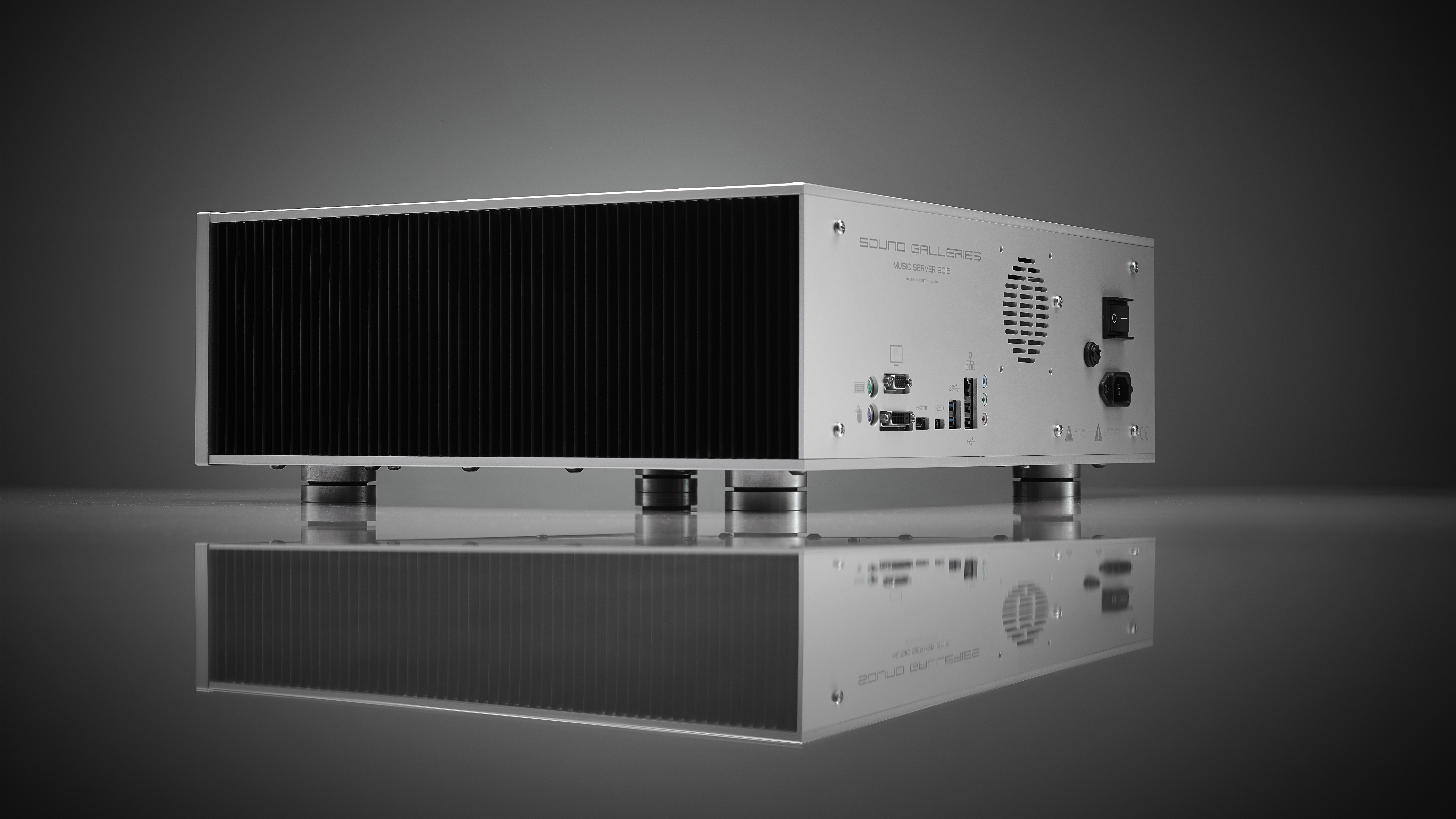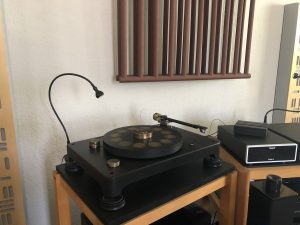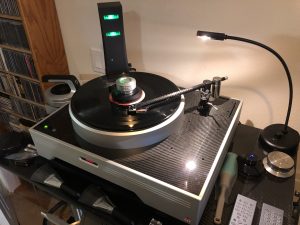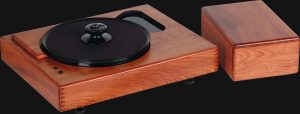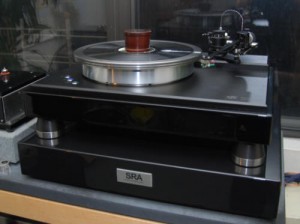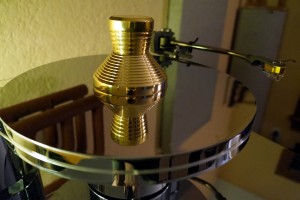A legend has been running in the UK audio scene for many years, of an audiophile with a vast collection of the world's most sought after turntables, amplifiers loaded to the brim with platinum transformers and rare vintage capacitors, and an audiophile lair with a sound that eclipses them all. For a long time I admit that I could scarcely believe that such an individual and system existed, and the whole thing must be an audiophile myth. As a keen angler myself, I have certainly grown accustomed to artistic license and outright myths on the river bank. So it came as a significant surprise when I was introduced to Mik Bhavnani, the man of mystery in 2017.
It turns out that Mik's father was a very passionate audiophile himself, owning several reference tables of the era. Unsurprisingly, Mik got hooked at an early age and already owned a Linn LP12 at 13 years old. By 14, Mik had already established a robust business with SME. Mik has spent his entire career developing his business, Unique Audio, and his personal reference system. I never did get the chance to discuss the underpinnings of the name "Unique Audio," but after the very first step into the main audio room, it was obviously apparent that you have entered a one of a kind audio Shangri La—a feast for the eyes and senses that instantly saturated one's amygdala. My brain was rapidly trying to process the veritable feast of audio jewels, both from audio history and the present day; to cast one's eyes on a singular Rockport Sirius III is an exciting prospect for all analog-philes, but to see three lined up in a row all ready to demonstrate their intoxicating abilities was a very special moment indeed.
Mik calls his front three here his "Kings," and for those impatient and not willing to indulge me further in my mini report, I can tell you that they are without question the Kings of Analogue (more details to follow later on in this report).
Mik has literally built his life in High End audio having been part of the UK scene since the very early days, and starting himself commercially in his early teens. During this time, he has acquired a level of knowledge and expertise in turntables and analogue playback the likes I have never seen. I would suggest that he might own the largest and most comprehensive top flight turntable collection in the world, let alone the vast numbers of arms and cartridges. What amazes me in conversation is his historical knowledge of the evolution of certain products such as those from SME. His SME arm collection alone could be used for an audiophile museum, let alone the fact that he owns the very first SME 30 table ever produced. Speaking of SMEs, Mik owns some very special SMEs indeed, even beyond the rare first production 30. Below you will see a one-off heavily gold plated (the gold plating is differently specified versus the factory special) 30/12 and a chrome plated 30/12 sporting the uber cool Air Tangent Reference arm replete with remote control VTA tower.
Mik's system building philosophy follows a leave no stone unturned approach, with every single component highly tuned and modified for its purpose in the chain. Spending countless hours experimenting with metallurgy led Mik and his colleague Eric to discover the sonic merits of platinum in the audio chain. I must say it surprised me that platinum would have any sonic merit based on the fact that it is a rather poor conductor compared with the usual choice of copper, silver, or silver-plated copper. That being said, I am philosophically open-minded to such experiments in audio and material choice in every single facet of a system is critical to the overall sound in my experience. Consequently, platinum is heavily featured in both the peripheral cabling (speaker and interconnects), and also transformers and capacitors. Mik and his colleagues, Richard from LFD and Eric, spend countless hours refining his cabling looms with cables being derived from vast arrays of multiple conductors either as solid core, ribbon or even "D" core. The latter I had not personally known about previously but Mik swears by this specific conductor geometry. The TTs all used various versions of the custom LFD made cables by Richard, including the incredible Gold Cobra. Based on the outlandish performance heard, I will be thoroughly investigating these for the future—I hope to learn much more about this important system philosophy and apply this in my own system.
Unique Audio is the UK distributor for Rockport speakers, and the main listening room sports a pair of modified Altairs - Mik biamps them for even greater performance. Mik has known Andy Payor since the 1990s and has developed a huge admiration for his incredible portfolio of statement loudspeakers. These Rockports are driven by Jadis amplifiers, although I realized that the only thing left Jadis is really just the chassis itself, as the whole thing has been customized to Mik's specifications. In their current guise, they are putting out ~500 watts into 8 ohms. There is no digital to be found in this lair—it is an analogue purist approach only. Mik has so many TTs, it would take me far too long to be able to list them all out, so instead I'll merely catalog those that formed our listening session:
- Rockport Sirius III with Etsuro Gold UK edition into 3 box Aesthetix IO (platinum transformers and many modifications).
- Rockport Sirius III with Koetsu Onyx with diamond cantilever into one-off LFD battery phono stage. This LFD phono stage was developed by Professor Hawksford, Dr Richard Bew, and Dr Paul Mills. All of the heavy tweaking and optimization of the passive component selection was carried by Dr Bews. This phono stage is furnished with extremely rare NOS components, such as silver foiled silver mica capacitors and tantalum film resistors. The entire RIAA circuit is built using silver capacitors. The wiring is a custom pure silver multi diameter array—each conductor has been hand processed for each frequency band. There is also further use of platinum, making this phono stage a non-commercial proposition and would be almost impossible to replicate today.
- SPJ Alba - special edition with one-off Kevlar composite platter—with custom Koetsu Onyx with diamond cantilever cartridge into top of the line Audio Tekne phono stage.
- CS Port TT with Etsuro custom prototype cart into top of the line Audio Tekne phono stage.
- Blue Pearl Jem custom heavily modified TT with Etsuro Gold and top of the line Audio Tekne phono stage.
Listening
It was a real luxury to be able to rapidly rotate between all the sources as Mik has a custom made switching device that enables his clients to rapidly move between the various tables under audition.
We listened to a whole host of music ranging from Miles Davis to Respighi. We covered full orchestral, solo piano, vocals, full choral, folk, and small jazz ensemble.
We started with the CS Port playing jazz vocals. Immediately I was impressed with the space, decay, and imaging specificity that the system produced. The mids palpability of the vocal was filled with dense texture and life. Listening to the exact same material on the SPJ very slightly engrossed me more by seducing me in its outright musicality, but without the CS Ports incredible decay, space, and retrieval. We are talking the upper most end of analogue replay here so one could easily be very content with either of these!
We then moved to the well-known Folk Singer recording by Muddy Waters (this version was the Analogue Productions reissue). The dynamics and life that the system managed to conjure really reminded me more of a horn type presentation than a traditional cone / box system. Mik has managed to get the sound to be completely absent of box coloration—this is an amazing feat. I approached this with some trepidation as those that know me know that I am deeply immersed in the SET/horn topology for the last couple of years. I was hugely impressed how the music was breathing and living in the room.
We rotated between the SPJ, CS Port, and then the Blue Pearl and it really varied from disc to disc which specific TT one might prefer. I understand why Mik owns all of these and reluctant to be a monogamous audiophile.
After around an hour or so of listening, Mik decided to demonstrate the might of the Rockport Sirius III on the same recordings. From the very first note, I was blown into kingdom come. We listened first to the Rockport with Etsuro into Aesthetix platinum—the chasm in performance between the Sirius III and all the other decks was very large. There is no doubt the superiority in every single facet of what you are hearing. It isn't a case of the gains being in one or two dimensions—it is more akin to a new source. But above all the Rockport had verve and life that the others could only dream about. After hearing the first Rockport we moved to the 2nd—this one with Koetsu diamond cantilever and LFD one-off battery phono stage. My goodness, the grip, neutrality, speed, and heft conferred by the LFD and Koetsu shocked me. I couldn't believe the outlandish performance from that the team at LFD has managed to extract from that circuit. I was astonished at the absence of grain and ultra-transparency and life. I am fairly sure it is comfortably the greatest solid state phono stage that I have yet heard.
I could continue to extol the virtues of the system, but suffice to say we are talking the very top end of the crop here. In absolute terms at this level, people rightly pick their poison whether that be derived from SET/horn, panel/push pull, stat/OTL, cones/ss or any other combination. All these upper echelon systems have their own virtues and one ultimately will find where their preference lies. Mik has surely achieved one of the world's ultimate audio systems, and his passion and dedication to this hobby earns him status as one of the world's greatest authorities on analogue vinyl replay.
I wish to sincerely thank him for hosting me for the evening - it was a wonderful time, and I hope that I can return to hear some of the other gems. Where I would start, I have no idea. How about BBC Radio 1's very own Garrard housed in custom spalted beech BobC plinth and uber rare Kondo V12 SME arm?
What about one from his fleet of EMT 927s or Walkers? Or perhaps maybe it is time to get to grips with the Goldmund Reference? Or how about the Kodo Beat with Air Tangent. I saw an unopened Kondo Ginga lurking there too. All I know is that the treasure trove of audiophile gems runs very deep indeed and is literally the content of audiophile dreams.




